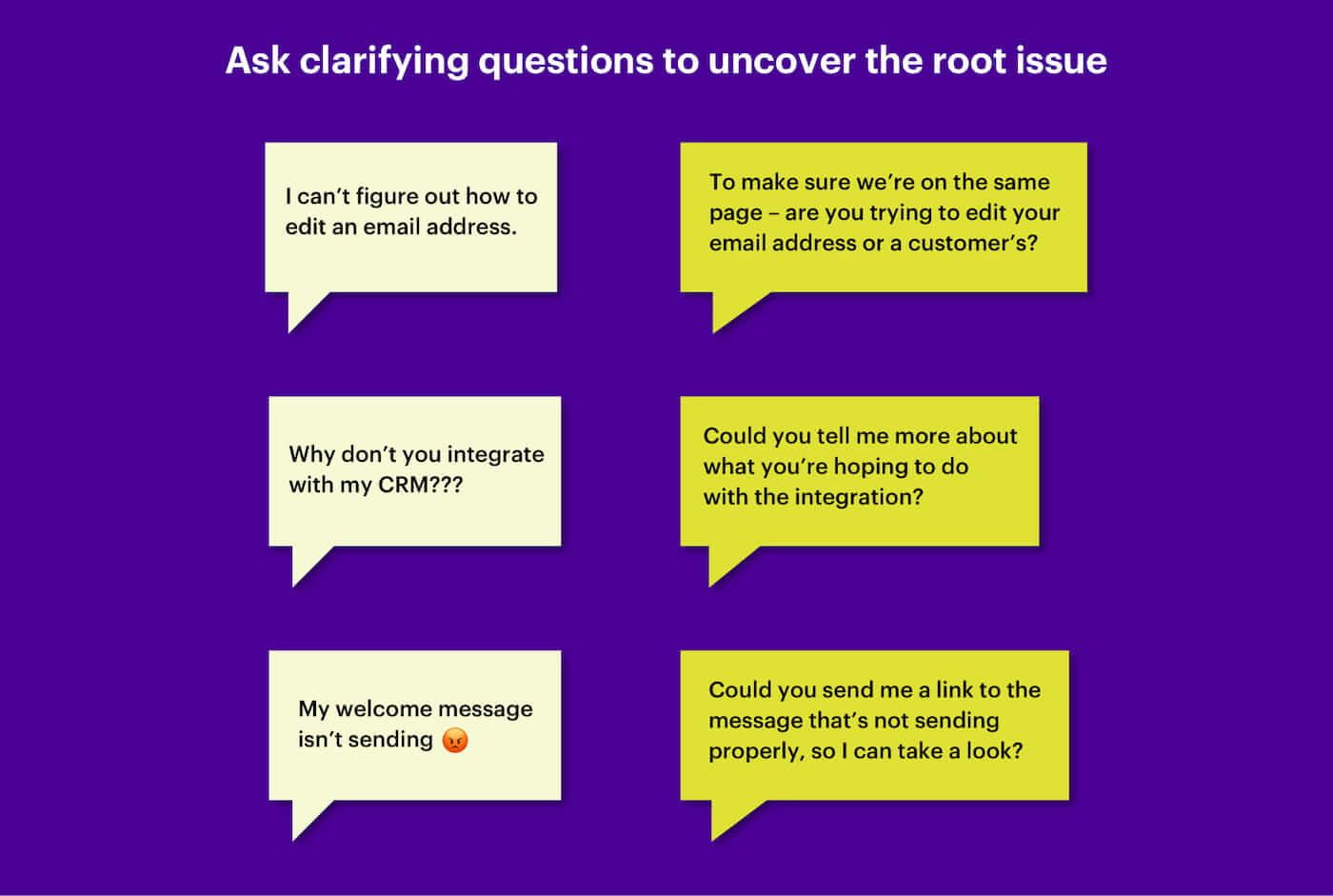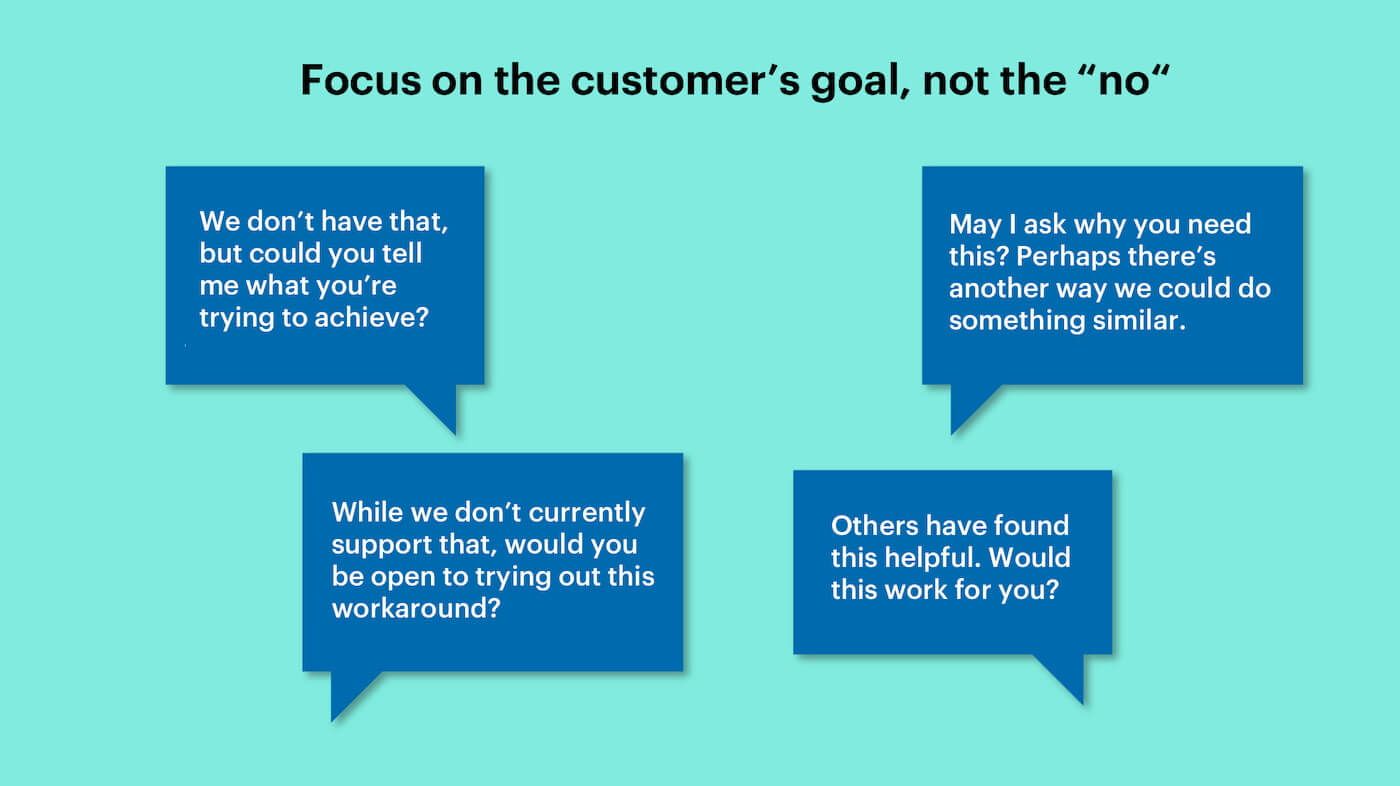
Keeping cool when things heat up: how to support angry customers
Main illustration: Jordan Bruner
One of the unavoidable realities of working in customer support is having to deal with people who are upset. Learning how to handle these uncomfortable customer calls will help you not only defuse angry customers but also keep your cool.
Before joining Intercom’s Customer Support team, I was a bartender in Chicago’s Wrigleyville neighborhood. The area was exciting, busy, and filled with people who had started drinking early and kept going all night. While working there, I saw firsthand how mishandling an emotional customer could turn a small issue into an explosive one – with a lasting impact on your business.
“Taking time to listen and really hear your customers, no matter why they’re angry, can be challenging”
Chances are your customers won’t try to throw a pint glass at you, but a bad support experience can lead to stressful conversations, customer churn, and bad online reviews that can go on to haunt your business’s reputation.
Taking a deep breath and really listening and hearing your customers, no matter why they’re angry, can be challenging. But turning around their bad experience, showing them that you really care about their problems, can remind them why they chose your product in the first place.
So how do you deal with difficult customers? How do you respond when they threaten to cancel their subscription or call you out on social media? It starts with leaning on five principles I picked up while bartending and adapting them for real-time support conversations.
1. When dealing with angry customers, start with “why”
It’s easy to get defensive when receiving critical feedback from customers, especially when you’re talking to them over live chat. Unlike with other service jobs, you can’t see your customer or read their body language – all you get is the customer’s name and some angry lines of text.
This can make it tempting to deflect with generic and empty phrases like, “We regret to inform you” and “Apologies for the inconvenience.” Unless you really do regret the situation or are genuinely apologetic, responses like these do little to resolve your customer’s anger.
“By understanding the root cause of their frustration, you’re better positioned to respond in a way that’s personal and useful to your customers”
Instead, take a minute to think about what your customer is asking and crucially, why they’re asking it. Is there a bug that’s impacting their team’s success? Are they asking for a new feature that would save them time or money? By understanding the root cause of the customer’s concerns, you’re better positioned to respond and take action in a way that’s personal and useful to your customers.

This isn’t to say every unhappy customer is going to be easy to handle, and it’s important to know when you’ll need to say no to certain requests and how to do that (more on that later). But these conversations are only made easier when you understand where customers are coming from.
2. Remember, customers have lives outside your product
Even a typically mild-mannered customer can blow up for reasons that have little to do with the issues you’re chatting to them about. Anything in their life could be affecting their mood and their reaction to obstacles they encounter at work. While you’re not here to play therapist, recognizing that they’re human will make stressful situations easier to bear for both you and them.
“The best thing you can do is remain calm, answer their questions, and remember that while you should take the customer’s complaint seriously, you shouldn’t take it personally”
I find it helpful to treat unhappy customers like they’ve just got caught in the rain without an umbrella. It’s unfortunate, but it’s not life or death. From there, I try to figure out if it was a sunshower or a thunderstorm – is this a small annoyance or a more harrowing experience?
Translated into a customer support context: a feature request that would save someone a few minutes of time is a sunshower. In cases like these, an irate customer is expressing a level of frustration that’s out of the line with the actual issue. The best thing you can do is remain calm, answer their questions, and remember that while you should take the customer’s complaint seriously, you shouldn’t take it personally.
On the flipside, a two-day outage or a bug that’s wiped a customer’s database is a thunderstorm. Your response should acknowledge the severity of the situation and communicate what’s being done to resolve it. Accounting for the experience your customer is having can go a long way in helping you keep your cool while solving the customer’s problems.
3. What you say and how you say it matters
There isn’t a single way of speaking that’s going to work in every situation. The key is to treat customers as individuals and use your communication skills to talk in a way that makes the customer feel heard. When an upset customer reaches out to you, using fallback lines like “Happy to help 😄” or “Have a wonderful day 🙌” can sound just as robotic as “What can I do for you today?”
Here are three common situations that can benefit from taking a one-to-one approach:
Situation #1: Problems with the product
If the customer says: “Why does the product always have this bug?”
Don’t say: “Happy to take a look at what you’re running into!”
Instead: “I understand how this can be frustrating. Can you share some additional details on what you’re running into so I can take a look?”
Situation #2: Negative support experience
If the customer says: “You’re not listening to me!”
Don’t say: “Tell me more about what’s wrong.”
Instead: “To make sure that we’re on the same page, can I get some clarifying information from you?”
Situation #3: Frustration with pricing
If the customer says: “This is unreasonably expensive!”
Don’t say: “We believe our prices are very fair.”
Instead: “I understand how cost is a big factor in the products you use. Let’s take a look at how you’re using our product and chat about your options.”
4. Follow up with the right tone
No matter how good your customer support is, chances are none of your customers really want to talk to you. Customer support is often the last place customers turn – they weren’t able to find an answer on their own or something is broken. Here, embracing a human tone and adjusting it to match the customer’s own tone can help you give them what they need.
If the customer approaches you analytically with hard numbers, using a relaxed and familiar tone isn’t going to elicit the same response as mirroring their specificity. Using timestamps and specific data gives those sorts of customers the kind of response they want, and that’s a major part of a personal customer experience – catering the conversation to each individual.
Other customers are more comfortable with a relaxed tone and you might end up having GIF-laden, emoji-filled conversations with them. Some, particularly the angry customers, just want things to be solved and tense conversations can make GIFs seem out of place.
5. Don’t be afraid to say “no”
There’s a certain holdover from the “customer is always right” mentality that ends up causing more harm than good. That way of thinking led to a whole school of customer support that feels the need to offer blanket apologies to every customer for every issue, big or small.
“There are also times when saying no is the right course of action”
There are certainly times where it makes sense to admit you could have done a better job – a bug that’s preventing customers from getting work done or a period of unexpected downtime. But there are also times when saying no is the right course of action.
Here’s a familiar situation: a customer writes in asking for a new feature. Sometimes, these are off-the-cuff suggestions that are low stakes for you and your customers. Other times, they can inspire real frustration and even anger when customers feel you’ve overlooked a critical feature.
Instead of apologizing or deflecting with “We’ll look into it,” follow up on feature requests by explaining why certain decisions were made and offering to see if there’s another way to help them achieve their goal. It won’t turn a furious customer into a friend, but it will give them the context that’s often needed to defuse potentially explosive customer interactions.

Empathy: the key to dealing with angry customers
It can be unpleasant and stressful to work with difficult customers, but that’s when good customer support is the most vital. Real customer support is grounded in empathy, active listening, and understanding why your customer is upset. It’s not about apologizing for every customer complaint but connecting with customers, letting them know they’re valued, and taking a problem-solving approach.
When approached with empathy, engaging with upset customers can not only help you prevent them from churning, but it can even turn them into loyal customers and strengthen customer relationships. That’s the power of a great support experience. Just like defusing tensions in a bar, dealing with angry clients requires keeping your cool when things heat up.






